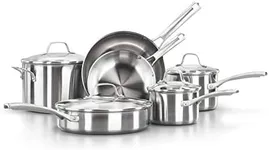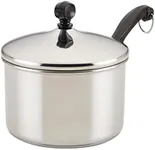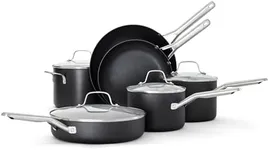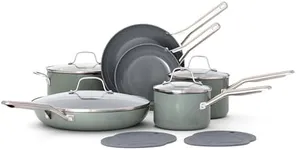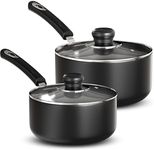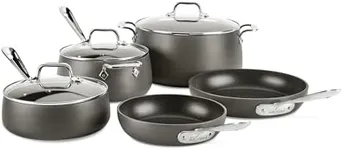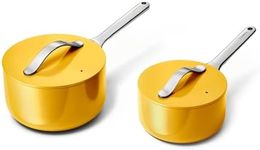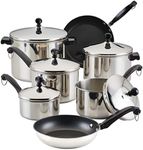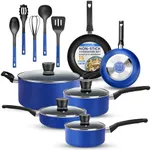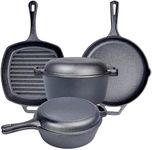Buying Guide for the Best Saucepan Sets
Choosing the right saucepan set can make a significant difference in your cooking experience. A good set of saucepans can help you prepare meals more efficiently and with better results. When selecting a saucepan set, it's important to consider several key specifications to ensure you get the best fit for your cooking needs. Here are some important factors to consider when choosing a saucepan set.MaterialThe material of the saucepan affects its heat conductivity, durability, and ease of cleaning. Common materials include stainless steel, aluminum, copper, and non-stick coatings. Stainless steel is durable and resistant to rust and staining, making it a popular choice. Aluminum is lightweight and conducts heat well but may react with acidic foods. Copper offers excellent heat conductivity but requires more maintenance. Non-stick coatings make cleaning easier and reduce the need for oil, but they can wear out over time. Choose a material based on your cooking habits and maintenance preferences.
Size and CapacitySaucepan sets come in various sizes and capacities, typically measured in quarts or liters. The right size depends on the type and quantity of food you usually cook. Smaller saucepans (1-2 quarts) are ideal for sauces, boiling eggs, or reheating small portions. Medium-sized saucepans (2-3 quarts) are versatile for cooking grains, vegetables, and soups. Larger saucepans (4 quarts or more) are suitable for preparing larger meals or boiling pasta. Consider your typical cooking needs and choose a set that includes a range of sizes to cover different tasks.
Handle DesignThe design and material of the handles can impact the comfort and safety of using the saucepans. Handles should be sturdy, heat-resistant, and comfortable to grip. Some handles are made of stainless steel, which can get hot, while others have silicone or plastic coatings to stay cool. Look for handles that are securely attached with rivets or screws. Ergonomically designed handles can make it easier to lift and maneuver the saucepans, especially when they are full. Choose handles that feel comfortable in your hand and provide a secure grip.
Lid TypeLids help retain heat and moisture while cooking, and they come in different materials such as glass or metal. Glass lids allow you to monitor the cooking process without lifting the lid, which can be convenient. Metal lids are more durable and can withstand higher temperatures. Some lids have steam vents to prevent boiling over. Consider the type of cooking you do and whether you prefer to see the food while it cooks. A good set will include well-fitting lids that match the saucepans.
Compatibility with CooktopsNot all saucepans are compatible with every type of cooktop. Common cooktops include gas, electric, induction, and ceramic. Induction cooktops require saucepans with magnetic bases, such as those made of stainless steel or cast iron. Check the manufacturer's specifications to ensure the saucepans are suitable for your cooktop. If you have multiple types of cooktops, look for versatile saucepans that work on all surfaces. Compatibility is crucial for efficient and safe cooking.
Oven and Dishwasher SafetySome saucepans are designed to be oven-safe, allowing you to start cooking on the stovetop and finish in the oven. This feature is useful for recipes that require both methods. Check the maximum temperature the saucepans can withstand. Dishwasher-safe saucepans make cleaning easier, but not all materials and coatings are suitable for the dishwasher. Consider your cleaning preferences and whether you need the convenience of dishwasher-safe cookware. Oven and dishwasher safety can add versatility and ease to your cooking routine.
